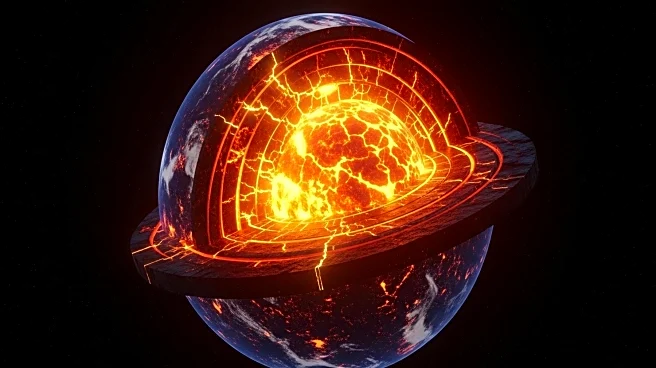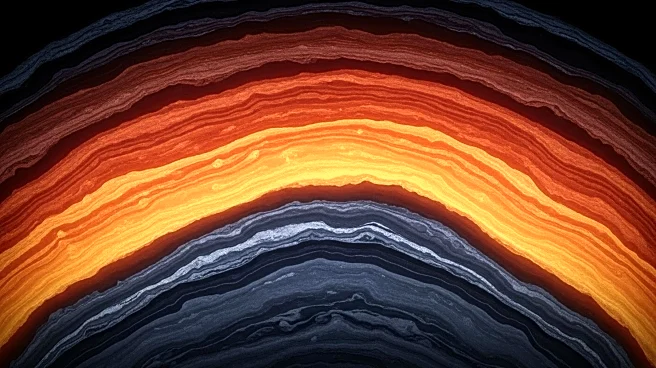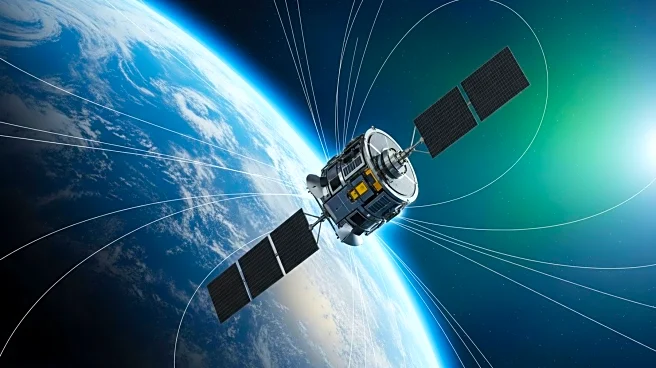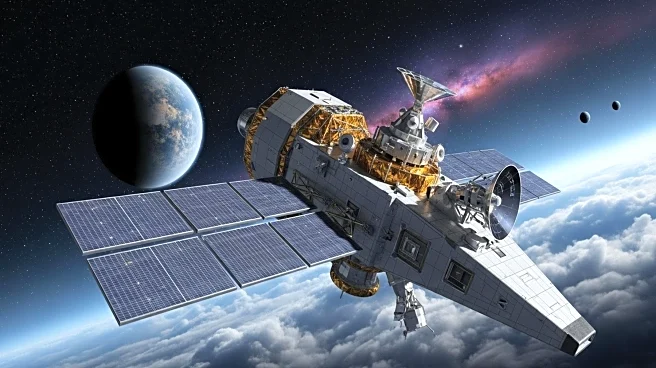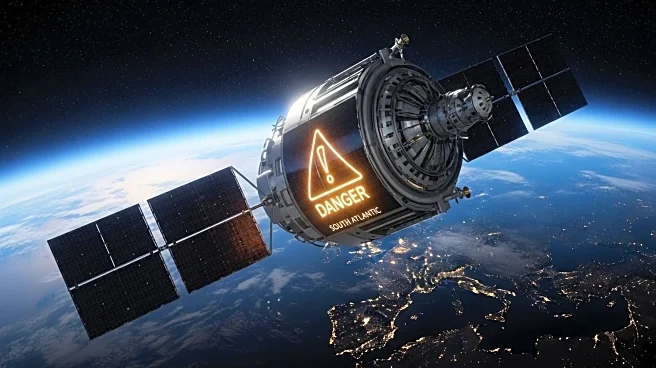What's Happening?
A team of geophysicists, led by Charlotte Gaugne Gouranton from Paris City University, has identified a significant shift in mass deep beneath the Earth's surface. This discovery, detailed in a recent paper in the journal Geophysical Research Letters, was made possible through data collected by NASA's Gravity Recovery and Climate Experiment (GRACE) satellites between 2006 and 2008. The satellites, originally designed to monitor changes in underground water storage and sea levels, provided insights into deeper layers of the Earth. The researchers found evidence of material shifting near the boundary where the Earth's core meets the mantle. This shift, described as a 'geomagnetic jerk,' was first noticed off the Atlantic coast of Africa around 2007. The team suggests that changes in the mineral perovskite at the bottom of the mantle may have altered the structural configuration, increasing the density and mass of surrounding rocks.
Why It's Important?
This discovery is significant as it enhances the understanding of the Earth's internal structure and its dynamic processes. The findings could provide insights into how the Earth's magnetic field is maintained, which is crucial for protecting the planet from space weather. Understanding these deep Earth processes is vital for geophysics and could have implications for predicting geological events. The research also highlights the potential of satellite technology in probing the Earth's interior, offering a new perspective on the interconnectedness of the planet's layers. This could lead to advancements in understanding the Earth's geomagnetic field and its fluctuations, which have broader implications for navigation systems and communication technologies.
What's Next?
The research team plans to continue their investigation using data from the GRACE-FO mission, the successor to the original GRACE satellites launched in 2018. They aim to explore how changes in the core-mantle boundary topography might influence core flow dynamics and the geomagnetic field. This ongoing research could potentially identify other rapid events in the deep mantle, furthering the understanding of Earth's internal processes. The continuation of this research is crucial for confirming the initial findings and expanding knowledge on the Earth's deep interior.








